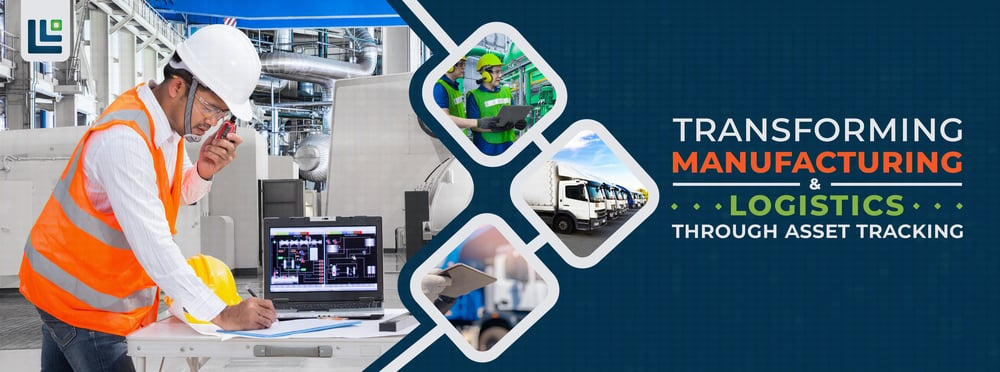Reactive planning will always be a necessity in industrial spaces. This is simply a product of how businesses function – there will always be unexpected problems that will always need to be solved. After all, not every factor can be controlled at all times. However, the time it takes to solve these problems inevitably impacts overall productivity and, when too frequent, creates a generally disruptive atmosphere. The good news is that, with the help of predictive planning, it is possible to predict when some of these problems will occur. This way, companies can address potential problems so that productivity is preserved and disruption is minimized.

Reactive Planning: The Way of the Past
Historically, most manufacturing companies operate in a way that is reactive rather than predictive. That is, they wait until a problem arises to address it in hopes that the obstacle can be resolved and avoided in the future. A reactive response is incredibly important to smooth business operations since it means that problems are being addressed rather than ignored. However, employing this approach solely limits a business’s opportunities for continuous growth since it is predicated on responding to the problems presented in historical data and daily operations rather than seeking to avoid them in the first place.
Predictive Planning: The Way of the Future
Increasingly, companies are turning to predictive planning – also referred to as predictive production or a combined predictive production planning – to fill in the gaps that reactive planning leaves open. While reactive planning responds to past and present circumstances, predictive planning aims to predict future challenges so that they can be addressed before they arise. This type of planning relies on collecting and synthesizing data to draw conclusions about production trends and how they might impact daily processes further upstream. By using this data, companies can reasonably speculate the direction their business might go in the future and prepare accordingly.
The benefits of predictive production include:
Upstream Visibility
The most prominent benefit of predictive production is that it provides upstream visibility. This means this kind of production allows companies to reliably predict subsequent stages of the production process and even the broader future of their productivity in the long term. This allows companies to prepare for any increase in scale by putting their current operations into a tangible, data-based perspective and providing insight into what they can expect when they make operational changes.
Real-time [Problem-Solving]
Predictive planning isn’t just about the future; it’s also about the present. Although reactive planning can occur in the present, it usually ends up being a matter of hindsight and historical data. Within predictive production, the combined historical data and upstream visibility leave operators more prepared to deal with challenges that arise in the present. They can be informed by the past as to the cause and informed by the projected future as to what a viable solution might be. In this way, predictive planning is much more likely to provide sustainable, long-term solutions to day-to-day problems that can translate into continued improvement down the line.
Continuous Improvement
Beyond the more immediate benefits, implementing predictive planning also promotes a mindset of continuous improvement. With only reactive planning, companies are constantly bombarded with last minute problems and troubleshooting. This leaves very little time to look toward the future. With predictive planning, the future is already accounted for, leaving room for operators to ask, “How can we make our process more efficient?” The data required for predictive production to thrive can be used to make informed decisions about improving operations rather than leaving any attempts at change up to chance.
Increase Your ROI by Investing in AirFinder OnSite
- Low Cost. AirFinder OnSite XLE is a fraction of the cost of competitors' pricing.
- Long Battery Life. XLE lasts up to 7 years with hundreds of location updates daily.
- Increased Efficiency. Spend less time looking for assets, and more time being productive.
How Asset Tracking Facilitates Predictive Production
Asset tracking facilitates predictive production through the automated tracking of inventory and WIP as it progresses through each stage of the production process. This generates valuable data that can then be used to extrapolate any challenges to productivity, standard production times, and expectations for the future.
Asset tracking allows companies to know where a product is at a given time in the production process, how long it’s been there, where it’s already been, where it’s going next, and when it can be expected to progress to the next stage. If a product stays stationary for longer than usual, there’s likely an underlying issue. Is the issue that the item has been overlooked? Is there an imperfection that’s making it take longer to fulfill that stage? Is a stage further down the line backed up and causing a bottleneck? Is there something wrong with the tools needed to fulfill the stage? Is the worker simply running a bit behind?
While location tracking of a single asset alone cannot answer these questions, the historical data and visibility of other products and tools provided by the asset tracking system can help direct operators to the most plausible answer. This data can further help identify recurring problems and potential triggers, allowing operators to make informed decisions about how to avoid them in the future.
Asset Tracking Solutions for Predictive Planning
Link Labs provides an asset tracking solution that can help manufacturing companies make the most out of predictive planning to achieve their goals and keep pushing forward in a competitive market. Instead of relying on manual record keeping, workers can leave it to an automated system and focus on actual production.
Our scalable solution allows for continuous visibility at all stages of production with customizable reporting and data compilation. Our goal is to help you improve your business operations in the present and the future. If you want to learn more about how our solution can work for you, book a demo today.





